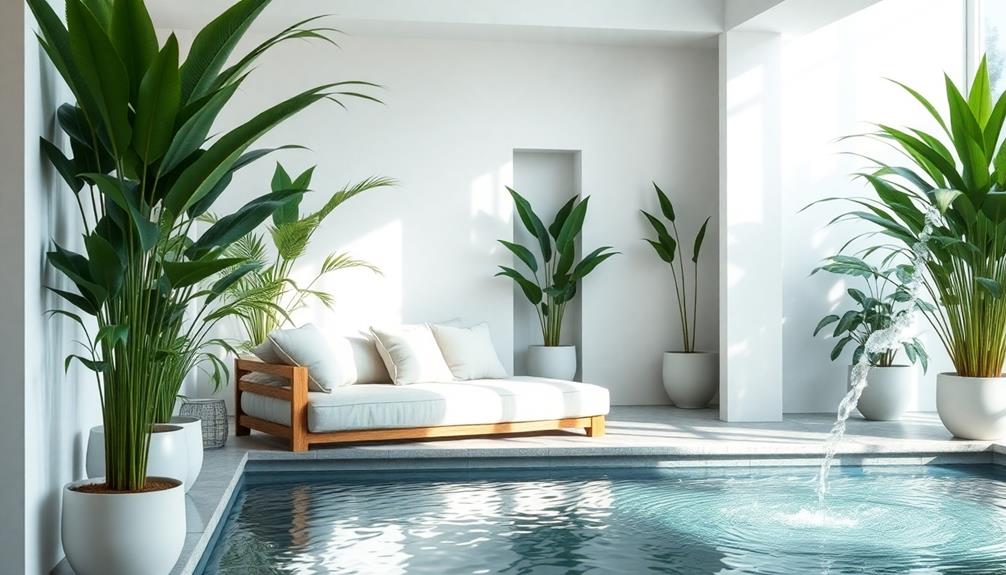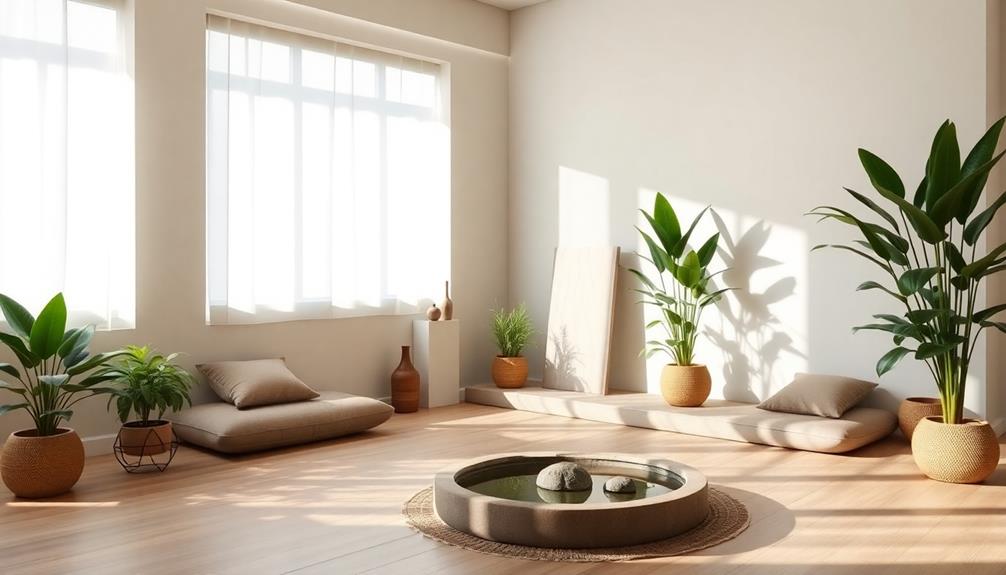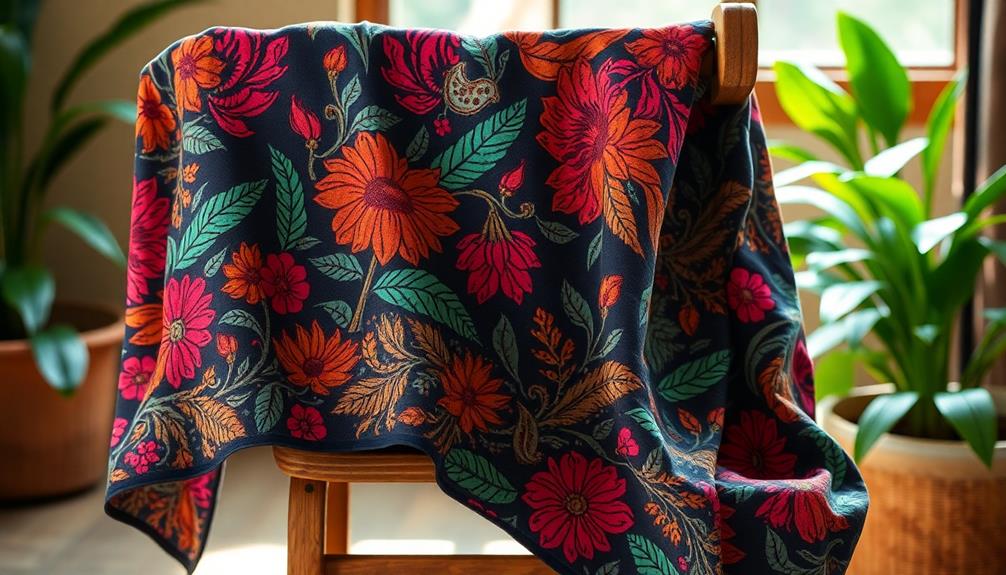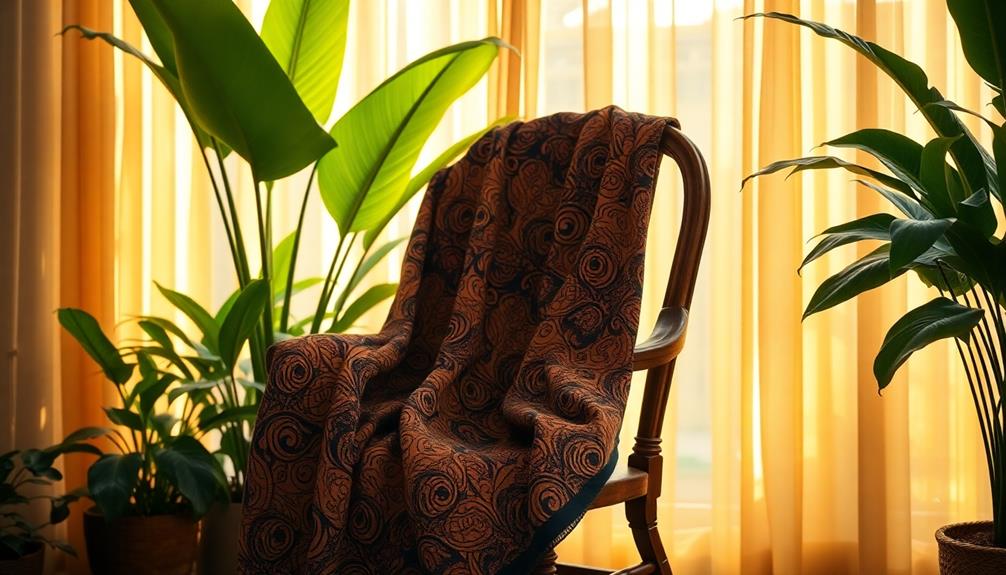To instantly make any room feel more relaxed, start by decluttering and creating a designated space for everything. Arrange your furniture in a way that encourages energy flow and conversation. Incorporate natural elements, like plants and natural light, to uplift the mood. Use soothing colors such as soft blues and earth tones to enhance tranquility. Introduce calming scents with essential oils, and personalize your space with meaningful decor. Finally, consider the five elements of Feng Shui to create a balanced environment. There are more tips and tricks to explore that can further elevate your relaxation experience.
Key Takeaways
- Declutter and organize your space to promote positive energy flow and mental clarity, creating a peaceful atmosphere.
- Incorporate natural elements like indoor plants and maximize natural light to enhance mood and foster warmth.
- Choose soft, calming colors like light blues and greens to create a serene environment and promote relaxation.
- Arrange furniture in a way that encourages conversation and interaction while maintaining clear pathways for smooth energy flow.
- Utilize aromatherapy with essential oils like lavender to evoke tranquility and enhance the overall ambiance of the room.
Declutter for Clarity
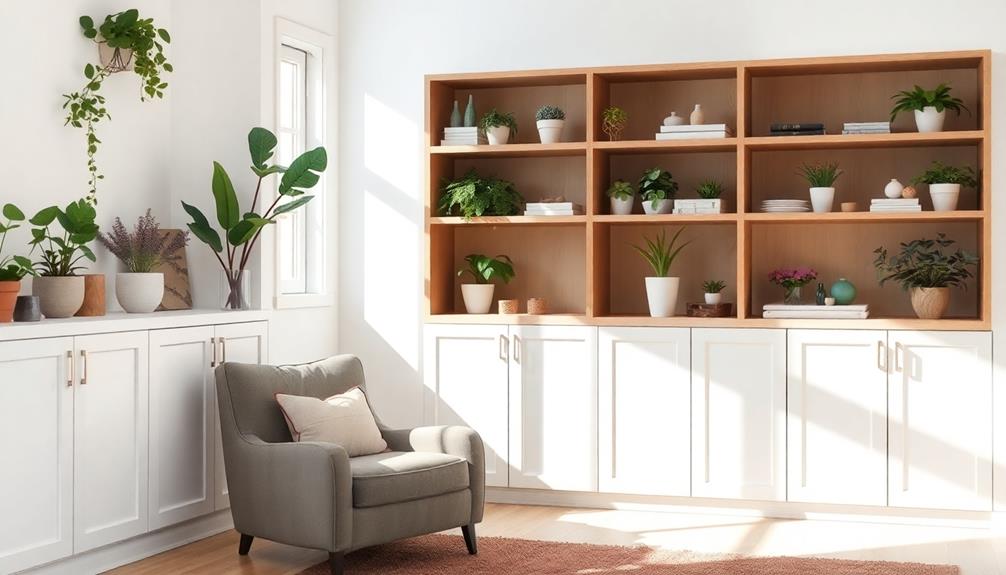
When it comes to creating a relaxing room, decluttering is key. You'll find that when you declutter for clarity, your space transforms dramatically. Open, clear areas foster a more peaceful atmosphere, allowing positive energy flow throughout the room.
Incorporating elements like Indonesian decorative pillows can add vibrant colors and intricate patterns that enhance your living space while maintaining a sense of order. Every item should have a designated home to maintain organization; this not only keeps clutter at bay but also enhances your mental clarity and well-being.
Don't underestimate the impact of junk drawers. They can disrupt good energy flow, so make it a habit to empty and sort them regularly.
Discarding or donating items you won't need in the near future can greatly reduce clutter, leading to a more tranquil environment.
Balance Room Proportions
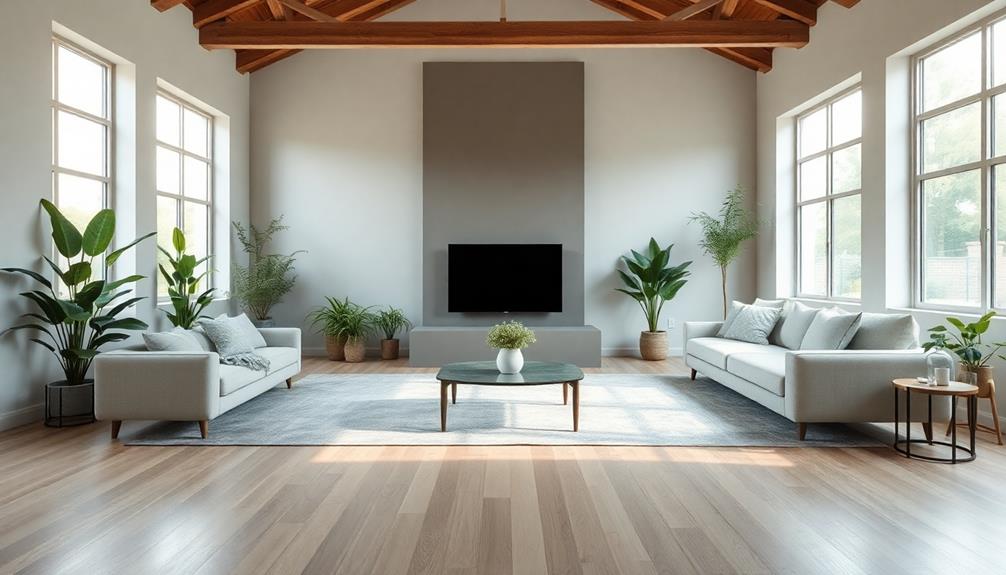
A room's proportions play an essential role in creating a comfortable and inviting atmosphere. To truly balance room proportions, focus on the size and quantity of your furniture. Oversized pieces can obstruct movement and disrupt the natural flow of Chi energy, making it imperative to select appropriately scaled items.
Incorporating natural materials and neutral palettes can further enhance the calming effect of your space, as seen in Balinese Interior Design concepts. Avoid cramped pathways and overcrowded spaces, as these minor inconveniences can hinder relaxation and usability.
Consider swapping out bulky furniture for smaller, more functional alternatives. This not only enhances the aesthetic appeal but also improves the energetic qualities of your room. A well-proportioned space promotes ease of movement, allowing energy flow to circulate freely.
You'll find that a harmonious atmosphere contributes considerably to a more relaxed environment. Pay attention to how each piece interacts with the room's overall layout. By ensuring your furniture complements the dimensions of your space, you'll create a tranquil setting that invites calmness.
Incorporate Natural Elements
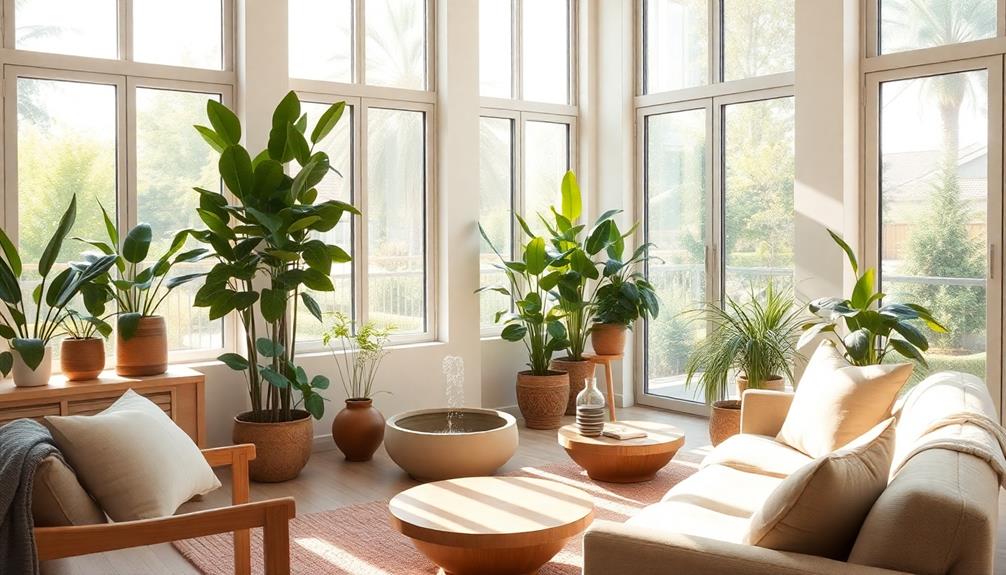
Creating a harmonious environment goes beyond just balancing room proportions; incorporating natural elements plays an essential role in enhancing relaxation.
Start by maximizing natural light in your space. Open those curtains wide and let sunlight pour in—it can greatly improve your mood and create a warm atmosphere. If privacy is a concern, consider sheer curtains that allow light while maintaining a sense of seclusion.
Next, introduce plants into your room. Not only do they brighten the space, but they also purify the air, contributing to a healthier and more serene environment. Incorporating indoor plants like snake plants or pothos can provide a low-maintenance option for those new to plant care. Choose easy-care varieties if you're not a plant expert.
Incorporating earthy colors, like greens and browns, in your decor can evoke a strong connection to nature. Paint the walls or add accent pieces in these tones to enhance the peaceful ambiance.
Additionally, consider using natural materials like wood or stone in your furniture and decor. These elements create a grounding effect that further promotes tranquility.
Lastly, if possible, add a small water feature. The soothing sounds of flowing water can greatly enhance the room's calming vibe.
Utilize Aromatherapy
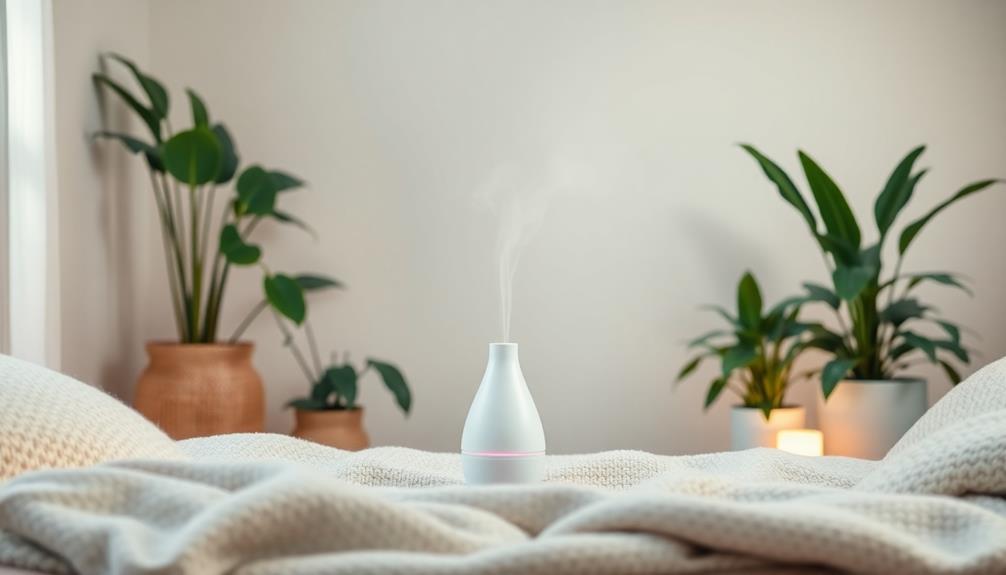
To create a relaxing atmosphere, you can utilize healing essential oils like lavender and eucalyptus.
Incorporating elements of traditional art, such as Indonesian decor masks, can further enhance the soothing ambiance of your space.
Placing a diffuser in the right spot helps distribute these calming scents evenly, enhancing your room's energy.
Healing Essential Oils
Essential oils can transform your living space into a haven of relaxation and tranquility. Using healing essential oils like lavender and chamomile is a simple way to create balance in any room. These oils are renowned for their calming properties, making them perfect for reducing stress and enhancing your mood.
Incorporating elements of Southeast Asia Decor, such as vibrant textiles and natural materials, can further enhance the soothing ambiance.
Incorporating essential oils into your daily routine can greatly improve the energy in your home. Consider using a diffuser to distribute relaxing scents throughout your space. Oils like eucalyptus promote a soothing atmosphere, while peppermint can energize and uplift your environment.
Blending different oils can also enhance your experience; for instance, combining lavender with bergamot offers both soothing and uplifting benefits.
Additionally, some essential oils, such as tea tree and lemon, help purify the air while providing relaxation benefits. With just a few drops, you can turn your home into a tranquil sanctuary.
Diffuser Placement Strategies
When it comes to maximizing the benefits of aromatherapy in your relaxing rooms, the placement of your diffuser plays an essential role. Proper diffuser placement enhances energy flow and guarantees that the scent of your chosen essential oils fills the space effectively.
Incorporating natural materials in your decor can further amplify the calming effects of the aromas, creating a harmonious atmosphere that reflects traditional Indonesian style home decor. Here are some strategies to weigh:
- Corners of the Room: Place diffusers in corners to maximize scent distribution, creating a balanced energy flow throughout the area.
- Near Windows: Position your diffuser close to windows. This allows fresh air to mix with essential oils, enhancing the overall ambiance and promoting relaxation.
- Multiple Diffusers: In larger rooms, use multiple diffusers to guarantee an even spread of aroma. This helps maintain a soothing environment throughout the space.
- Tailored Essential Oils: Select essential oils based on your desired effect. For relaxation, opt for lavender; for invigoration, choose peppermint.
Additionally, don't forget to regularly clean your diffusers to prevent buildup. This guarantees that the scents remain pure and effective in enhancing the room's energy, making your space truly calming.
Maximize Natural Light
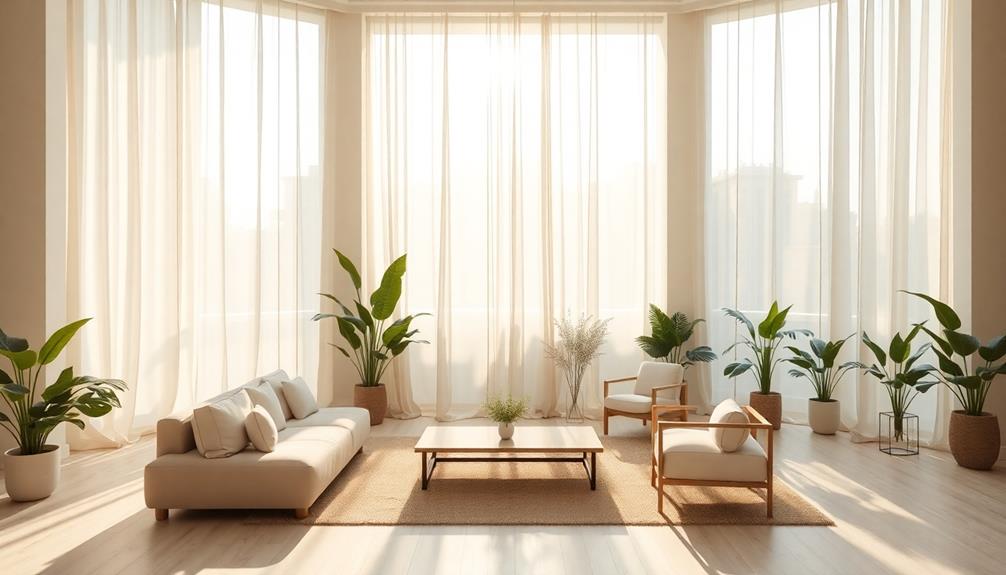
How can you create a soothing environment that elevates your mood? Start by maximizing natural light in your space. Sunlight is known to boost serotonin production, which enhances feelings of happiness and relaxation.
To let the sunshine in, consider using sheer curtains. They provide privacy while allowing ample natural light to flood your room, creating a bright and airy atmosphere. For a more tropical feel, you might also think about incorporating large windows and sliding doors to achieve a seamless indoor-outdoor flow, as seen in tropical villa plans.
Make certain your windows are clean and unobstructed to guarantee maximum sunlight penetration. This is essential for maintaining a vibrant and energizing environment.
Position mirrors strategically to reflect and amplify the natural light, brightening darker corners and enhancing illumination throughout the room.
Additionally, opt for light-colored walls and furnishings. These colors reflect light better, contributing to a more open and soothing ambiance.
By combining these elements, you'll not only maximize natural light but also create a sense of balance and harmony that promotes relaxation.
Rearrange for Energy Flow
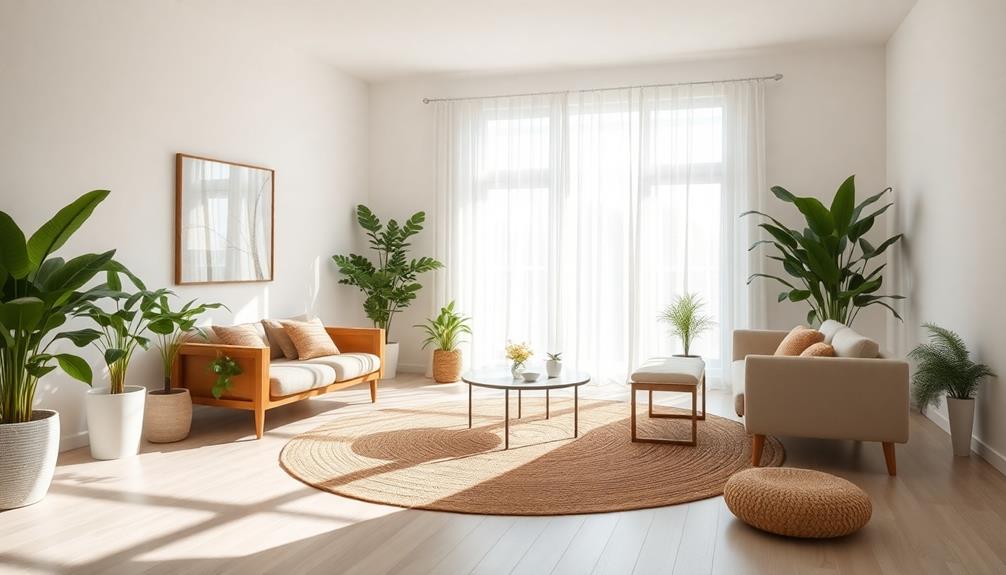
To create a relaxing room, you should optimize your furniture placement to enhance movement paths and encourage energy flow.
Consider incorporating Scandinavian charm in kid-friendly homes by using light colors and natural materials, which can help create a calm atmosphere.
Position seating to foster conversation areas, which helps build connection and comfort.
Optimize Furniture Placement
Furniture placement plays an essential role in creating a relaxing atmosphere in any room. To optimize your space, focus on how you arrange your furniture to enhance energy flow. Here are some tips to contemplate:
- Command Position: Position your sofas and chairs facing the entrance. This arrangement fosters a sense of security and control, making the room feel more inviting. Consider adding a Face Indonesian Decor Mask to reinforce the cultural ambiance and enhance the overall aesthetic of the space.
- Clear Pathways: Avoid oversized furniture that obstructs movement. Keeping pathways clear helps maintain smooth energy flow, preventing feelings of congestion.
- Promote Connection: Arrange seating in a way that encourages conversation. Angled placements rather than linear ones can create a dynamic atmosphere, enhancing social interactions.
- Create Balance: Use pairs of furniture pieces, like matching side tables or chairs, to introduce balance and harmony in the space. This symmetry contributes to a visually appealing environment.
Additionally, consider incorporating multifunctional furniture, like ottomans with storage, to keep your space organized.
Enhance Movement Paths
Creating a harmonious environment involves more than just furniture placement; it also requires enhancing movement paths throughout the room. To promote easy movement and facilitate positive Chi flow, rearrange your furniture thoughtfully. Incorporating elements of modern tropical aesthetics can also enhance the overall serenity of the space.
Avoid placing large items in high-traffic areas, as this can create congestion and disrupt the energy flow. Instead, guarantee there's ample space for unobstructed movement, allowing for a more serene atmosphere.
When arranging seating, position chairs and sofas to encourage conversation and connection. Make sure they face each other rather than blocking entryways, which helps foster a welcoming vibe. Consider using multifunctional furniture to reduce clutter and maintain open space. This not only enhances movement paths but also contributes to a relaxing environment.
Regularly assess your furniture placement and adjust it as needed to maintain a balance of energy flow. By keeping all areas of the room inviting and comfortable, you'll create a space that feels more relaxing and harmonious.
Create Conversation Areas
A well-arranged seating area can greatly enhance the energy flow in your room while fostering engaging conversations.
To create inviting conversation areas in your living room, consider these tips:
- Face Seating Toward Each Other: Position chairs and sofas to encourage connection. This setup invites interaction and promotes lively dialogue, enhancing the room's energy.
- Utilize Angled Furniture: Arrange your furniture at angles rather than in a straight line. This creates dynamic energy pathways, encouraging movement and making the space feel more vibrant.
- Ensure Ample Space: Leave enough distance between furniture pieces to facilitate easy movement. Overcrowded areas can obstruct the natural flow of chi, making the room feel cramped.
- Incorporate Rugs: Use rugs to define distinct conversation zones. They visually separate areas while guiding energy flow, making your living room feel more organized and inviting.
Personalize Your Space
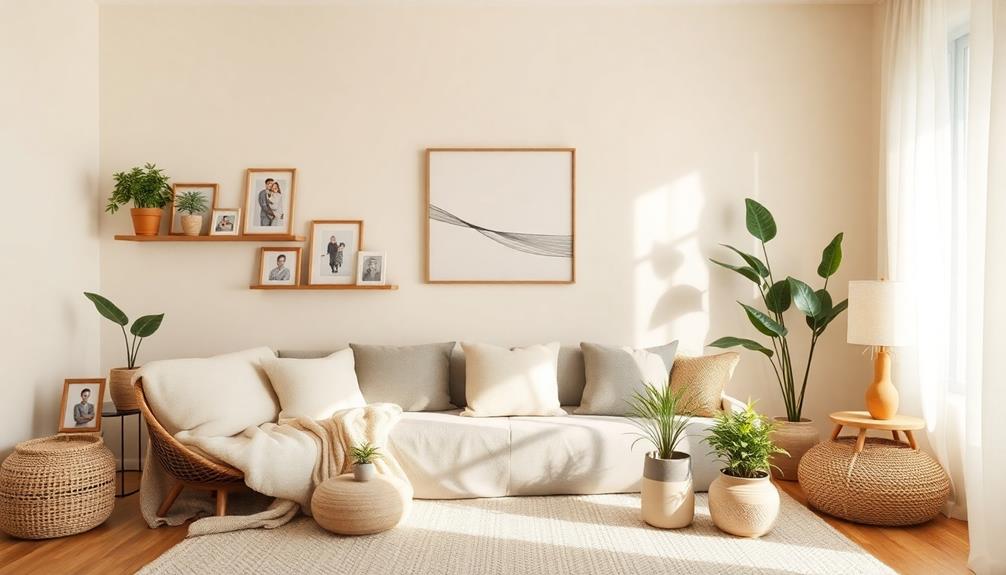
Personalizing your space can transform it into a sanctuary of relaxation and joy. To truly make your room feel like your own, focus on incorporating meaningful decor that evokes happy memories and reflects your unique style. Instead of following fleeting trends, choose decorations that resonate with you personally. Family photos, cherished heirlooms, or souvenirs from special trips can enhance emotional connections, bringing warmth to your environment.
Additionally, consider rotating your decor seasonally or based on personal experiences. This keeps your space feeling fresh and engaging, allowing you to reminisce about different moments in your life.
Balance these personal touches with overall design harmony by ensuring that your decor items complement each other, maintaining a cohesive aesthetic throughout the room.
When you personalize your space, you create an atmosphere that nurtures comfort and relaxation. By surrounding yourself with items that speak to your heart, you'll cultivate a sanctuary that not only looks good but feels good, inviting peace and joy into your everyday life.
Embrace the power of meaningful decor, and let your space reflect who you are.
Optimize Color Choices
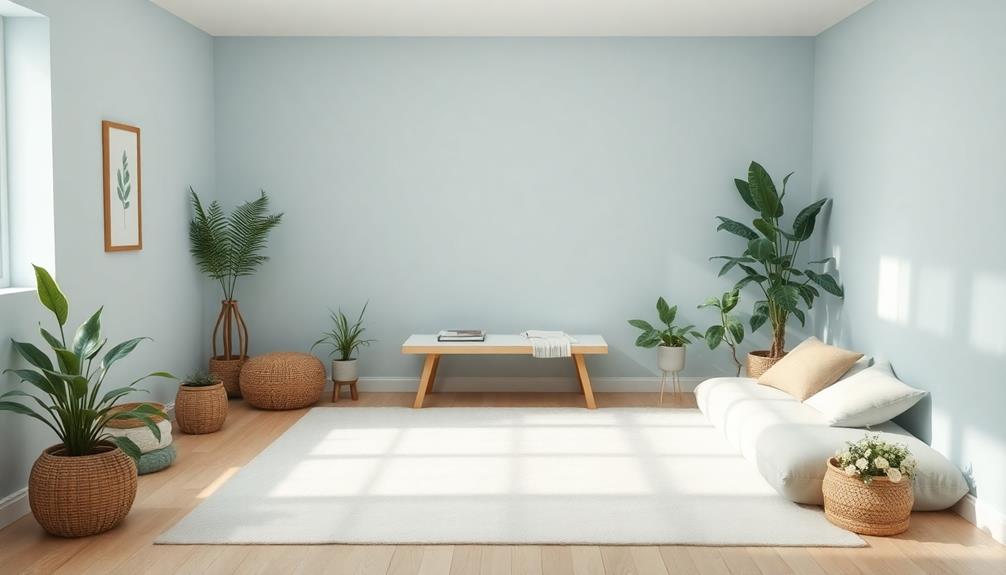
When optimizing color choices in your relaxing room, think about how different shades can affect your mood.
Soft pastels and earth tones can create a calming atmosphere, while cool colors like lavender enhance serenity.
Calming Color Palettes
Choosing the right color palette can transform a room into a calming retreat. By selecting calming color palettes, you can create an environment that promotes relaxation and tranquility. Focus on soft, cool tones and earthy colors to achieve this effect.
Here are some ideas to contemplate:
- Soft Blues: Light blue evokes serenity, making it perfect for bedrooms or meditation spaces.
- Muted Greens: Incorporate shades of green to bring nature indoors, enhancing the peaceful vibe.
- Neutral Colors: Use beige or soft gray to provide a grounding effect, creating a spacious atmosphere.
- Earthy Tones: Shades like soft browns and muted yellows can evoke feelings of comfort and security, perfect for living areas.
Balancing these colors according to the bagua map can maximize their calming properties. For instance, placing these hues in areas linked to health and tranquility will enhance your relaxation experience.
Emotional Responses to Colors
Colors evoke powerful emotional responses that can greatly influence how a space feels. When creating a serene environment, you'll want to focus on colors that promote relaxation. Cool colors like blue and green are fantastic choices, as they're known for their calming effects and connection to nature. These shades can make bedrooms and relaxation areas feel peaceful and tranquil.
While warm colors such as red, orange, and yellow can energize a room, excessive use might lead to feelings of agitation. For relaxation spaces, it's better to minimize these vibrant hues. Instead, consider earth tones like soft browns and gentle yellows, which foster grounding and stability.
Neutral colors, such as beige and soft grays, also enhance the sense of spaciousness and peace. They provide a versatile backdrop that allows you to add personal touches without overwhelming your senses.
Additionally, when incorporating patterns, choose soft, flowing designs to evoke soothing feelings in your space. By carefully selecting colors that promote relaxation, you can create an inviting atmosphere that encourages a serene mindset.
Harmonizing With Nature Tones
To create a relaxing space, harmonizing with nature tones is essential for fostering a sense of tranquility. By choosing the right colors, you can enhance your room's atmosphere. Here are some tips to optimize your color choices:
- Earth Tones: Incorporate soft greens, browns, and muted yellows to establish a grounding vibe. These colors promote stability and relaxation, making your space feel more inviting.
- Natural Hues: Use shades like beige or cream in your decor. These colors are known for their calming effects and can markedly contribute to a peaceful environment.
- Warm Colors: Add touches of terracotta or soft reds to evoke warmth and comfort. These hues are perfect for cozy areas where you want to unwind after a long day.
- Balanced Palette: Combine cool colors like soft blues and lavenders with warmer tones to achieve harmony. This balance supports a serene ambiance, avoiding feelings of coldness or detachment.
Create Comfortable Layouts
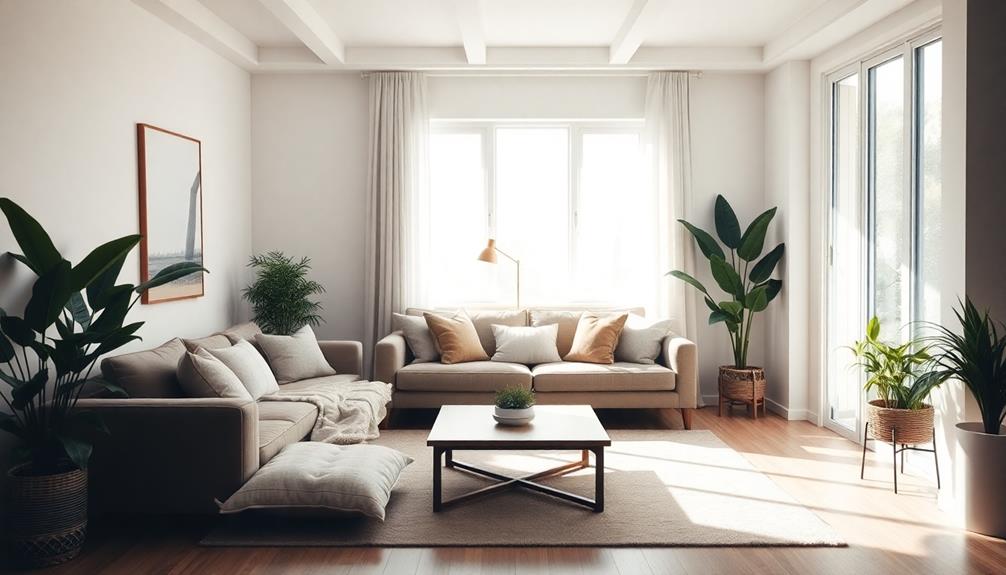
Creating a comfortable layout in your relaxing room can greatly enhance your sense of peace and well-being. Begin by arranging your furniture in a command position, with sofas and chairs facing the entrance. This setup enhances feelings of safety and promotes connection among everyone in the space.
Make sure there's ample space between furniture pieces to facilitate easy movement, as this encourages a smooth flow of energy throughout the room.
Incorporate a mix of seating options like couches, armchairs, and floor cushions to create a cozy atmosphere that invites relaxation. When you make the area feel inviting, you'll find it easier to unwind.
Additionally, focus on lighting—utilize soft, indirect sources like lamps and sconces to create a warm ambiance, reducing harsh shadows that can feel unwelcoming.
If you're working on a bedroom layout, position your bed against a sturdy wall with bedside tables on either side. This arrangement fosters a sense of security and balance, further enhancing the comfortable layouts you're aiming for.
Embrace the Five Elements
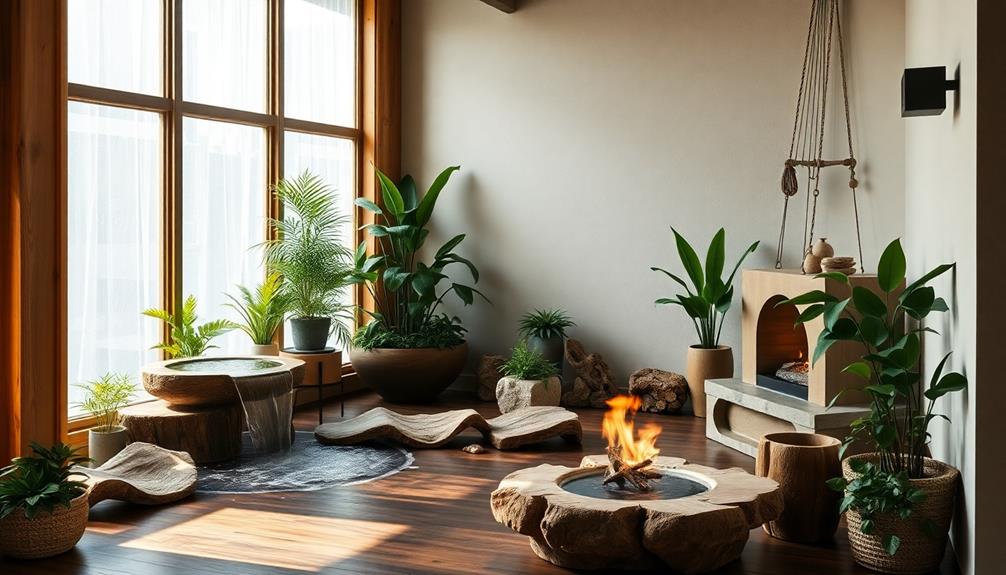
Embracing the five elements of feng shui brings harmony and balance to your relaxing room, fostering an environment that promotes tranquility. Each element plays a vital role in enhancing the energy of your space.
Here's how you can incorporate them:
- Earth: Use earthy colors like yellow or brown to ground the space. Incorporate ceramics or stone materials for stability, creating a calming atmosphere.
- Water: Introduce water elements with black accents or small water features. These promote fluidity and calmness, transforming your room into a tranquil sanctuary.
- Wood: Add green and blue hues through living plants or natural wood decor. This element encourages creativity and growth, bringing vibrancy to your relaxing environment.
- Metal: Incorporate white or gray colors along with metallic objects. The metal element enhances clarity and focus, contributing to an overall serene ambiance.
Frequently Asked Questions
How Can I Make My Room Feel More Welcoming?
To make your room feel more welcoming, clear clutter, use warm lighting, and choose soft colors. Arrange furniture for conversation, and add personal touches like photos or artwork to create a cozy, inviting atmosphere.
What Is Bad Feng Shui in the Bedroom?
Bad feng shui in your bedroom includes bed placement directly in line with the door, clutter underneath, distracting electronics, mirrors facing the bed, and dark colors. These factors can disrupt your relaxation and sleep quality.
How Do I Make My Room Feel New?
You can transform your room into a serene oasis overnight! Rearranging furniture, adding vibrant plants, decluttering surfaces, rejuvenating decor, and incorporating calming scents will instantly revitalize your space, making it feel fresh and inviting.
How Do You Counteract Bad Feng Shui in a Bedroom?
To counteract bad feng shui in your bedroom, reposition your bed away from the door, declutter, use calming colors, incorporate soft lighting, and add plants or soothing artwork to enhance positive energy and tranquility.
Conclusion
So, if you want to transform your chaotic space into a serene sanctuary, just remember: declutter like you're preparing for a minimalist museum exhibit, and balance those room proportions like you're auditioning for a home makeover show. Throw in some plants, light a scented candle, and voilà! You've got a Zen oasis—or at least a room that looks good enough for Instagram. Who knew relaxing could be this complicated? Just don't forget to breathe amidst all the feng shui frenzy!

